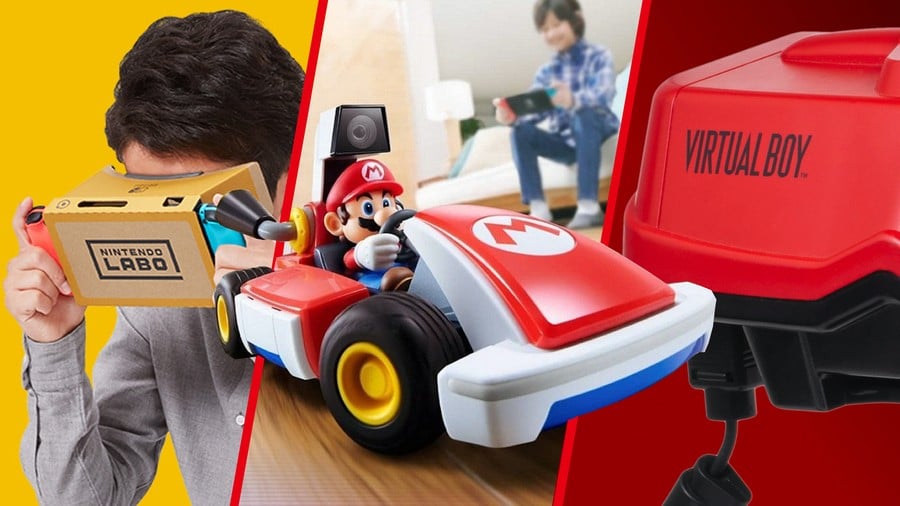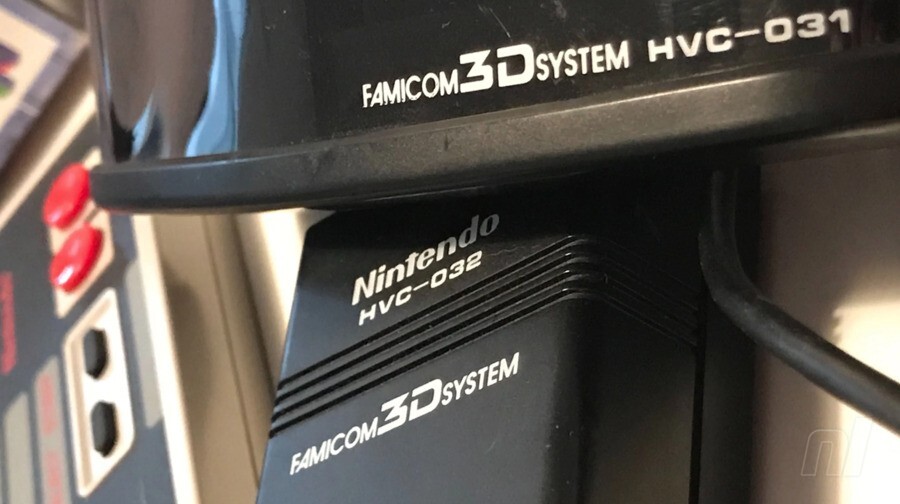
It's been six years since we first experienced the wonderful Mario Kart 8 on Wii U, becoming the troubled console’s best-selling title and up until last week, fans had been wondering where the next entry was. Sure, Deluxe arrived in 2017 with expanded content and mobile users have enjoyed Mario Kart Tour, but neither substituted that desire for a fully-fledged sequel. Rumours had previously cropped up about a new entry this year and many hoping they’d finally see Mario Kart 9.
Few could’ve expected Mario Kart Live: Home Circuit instead, as confirmed in last week’s 35th Anniversary Direct. Utilising real-life toys to build your own circuits, it’s what many of us would’ve dreamed for as kids. Relaying a video feed from a remote-controlled kart to our Switch, item boxes and fellow racers will be displayed via Augmented Reality. It came as a surprise but recent years have shown an experimental attitude towards this sub-series, not forgetting how Mario Kart Arcade saw a VR version release back in 2018.
Nintendo has always sought new ways to play and that goes back to legendary designer Gunpei Yokoi’s 'lateral thinking' philosophy, prioritising gameplay over new technology. It set them apart from competitors and back in January, Nintendo President Shuntaro Furukawa spoke to Japanese magazine Nikkei, re-affirming Nintendo’s commitment to this. During that interview, he specifically referred to AR, saying that: “it is definitely one of the many aspects we are interested in. We are currently researching what interesting ways we can utilize it”.
We’ve only recently seen Nintendo move towards AR and VR applications as technology allows it, but through their use of stereoscopic 3D gameplay, that groundwork has long been set. Creating an illusion of depth, these efforts begun in 1987, starting with the Famicom 3D System. Displaying 3D graphics via shutter glasses, this Japan-only accessory connected to your Famicom but was only compatible with a limited number of games. It didn’t take off as a result and was widely regarded as a failure.

Despite this, Nintendo continued their research and back in 1991, Gunpei Yokoi became impressed with a tech demo presentation by Reflection Technologies, showcasing immersive technologies. Deciding to make a dedicated console, Nintendo stuck to stereoscopic 3D Graphics but this time with a head-mounted display. Working as a portable table-top console, it utilised a parallax effect to create that illusion of depth and a red monochrome display to keep costs down.
Much has already been written of Virtual Boy’s troubled development, but with the imminent Nintendo 64 taking greater internal priority, resources were increasingly pushed away from Yokoi’s 3D console. Being rushed to market in 1995, anyone familiar with Virtual Boy knows how this story goes. It sold poorly and received widespread criticism for a lack of portability, nausea-inducing display and minimal immersion. In the end, only 22 games were released for it.
It was an undeniable failure and come 1996, Virtual Boy was quickly discontinued, leaving an infamous legacy often credited as creating a negative association towards VR technology. Despite Nintendo’s denials, rumours suggest they laid the blame on Gunpei Yokoi directly, who soon resigned from the company. For many, that appeared to be the end of Nintendo’s ambitions in this realm and up until the 3DS, publicly they went quiet.
Many believed Nintendo shunned this area after the Virtual Boy’s failure but during a 3DS interview, former president Satoru Iwata revealed this wasn’t true. He confirmed that every GameCube had 3D circuitry built into it, requiring use of an accessory to activate but sadly, that accessory was scrapped due to prohibitive component pricing. Luigi’s Mansion was fully playable with it and whilst we’ll sadly never see that version, elements of this were later realised through the 3DS remake.
During that same interview, Satoru Iwata also revealed Nintendo had experimented with 3D technology on the Game Boy Advance SP, trying to create stereoscopic 3D images without utilising special glasses. Unfortunately, this was held back by the SP’s screen resolution, Iwata confirming that the result did not look good. The idea clearly stuck with Nintendo though and come 2011, the Nintendo 3DS launched, boasting this as their prominent new feature.
Whilst 3D took centre stage, it’s where AR truly came into play for Nintendo and each console shipped with 6 paper AR cards, scanned in via the 3DS’ outer camera. AR Games came pre-installed to showcase this, bringing a set of mini-games which made for an interesting tech demo. Several earlier games included AR compatibility like Nintendogs + Cats but none went to Kid Icarus: Uprising’s lengths. Launching with a full collectable card set and folder, there were over 400 cards in total, all of which could be scanned into Uprising and even let character cards battle each other.
It showed that Nintendo was actively invested in the technology to include but sadly, it became relegated to being a side-feature and developer interest declined. Whilst the Switch doesn’t natively support AR too, Nintendo’s efforts began expanding into Toys-To-Life concepts and as part of that, Nintendo Labo launched back in 2018. Mixing cardboard cutouts with the Switch and Joy-Con controllers, we’ve seen several kits released but the most notable one came last April, as they launched Toy-Con 04: VR Kit.
Of course, as a portable machine with some cardboard attached, the Switch can’t use VR in a comparable manner to PC headsets or PlayStation VR. Making it accessible for all ages, this entry-level experience allowed players to view stereoscopic 3D images via Nintendo’s hybrid console and it didn’t stop Nintendo trying to be creative. Big games like Legend of Zelda: Breath of the Wild, Super Mario Odyssey and Super Smash Bros Ultimate were updated to support Labo VR, to admittedly mixed results.

Undeniably though, Nintendo’s biggest breakthrough came several years ago, and this is what most likely inspired Mario Kart Live’s core premise. With smartphone use on the rise and 3DS AR basically dead, mobile platforms finally introduced us to Nintendo’s first fully-fledged AR experience, Pokémon Go. Developed in collaboration with Niantic and The Pokémon Company, it used a combination of your phone's camera, GPS functionality and Google Maps data, becoming the closest thing we’ll ever get to real-life Pokémon.
Through the combined use of these technologies, this was a concept only AR could achieve and quickly became a global phenomenon, helped by a free-to-play pricing model that left few barriers to joining in. It wasn’t always smooth going at launch, suffering with some technical issues but whilst that initial bubble has since burst, it maintains a steady userbase. Recent updates have sought to improve upon AR functionality further, adding reality blending which lets Pokémon hide behind real-life objects.
Though Mario Kart Live: Home Circuit greatly differs in pricing, it’s clear Nintendo is looking to replicate elements of what makes Pokémon Go so successful. By bringing another beloved franchise into the “real world”, it offers immersion we previously could only dream of. There’s a varied history in Nintendo’s work between 3D and mixed realities but ultimately, that desire to create new experiences remains consistent. With Home Circuit looking set to continue this legacy, we can’t wait to see how it turns out.
Do you have any fond memories of Nintendo’s 3D experiences? Did the Virtual Boy make you feel uneasy? Let us know in the comments.





Comments 11
Now to wear a virtual boy whilst playing Mario Kart Live, having surrounded the course in AR cards with my 3ds recording the entire race in 3d.
That would be something different VR and Switch.
If I had kids I'd definitely pick it up for them but as an adult this isn't for me.
I won’t be able to resist. Simple as that. I still play the 3DS with the slider up to the max and I’m still amazed at the effect even today. Labo VR was fun for a while but doesn’t get played anymore. Vehicle Labo still gets game time with my kids though. With MK Live, if there is a real sense of speed on the switch screen despite the real cars obviously not travelling that fast then this could be a winner. I fear there won’t though and this will be fun for little‘ uns but not so much for us veteran karters!
Still have my Virtual Boy although it's packed away. It was a neat little system but I can understand all the problems it had. I never personally got sick from it but it did feel more like a prototype for a portable system.
And they’ve all been not good.
Mario Kart Live is way better than Labo, change my mind.
Why is it no one points out that MK8 on Wii U alone OUTSOLD Double Dash on GameCube???
vast majority of these comments commentate on nintendo good or bad. This isnt what fans do and complain all day long if its not pokemon "lazy" its 3d all stars limited belly aching.
dont like it dont buy it.
but seriously such negative energy in the nintendo community
@Trajan I mean, for a free pre-downloaded game AR games was pretty good. I got a few hours out of the fishing game and it was cool to take pictures of Nintendo characters in my house using the character cards.
Another half-assed Mario Kart spin-off tells me that Mario Kart 9 is even further away 🙁 It's been SIX YEARS. And over five years since the DLC. Sheesh 🙄
Tap here to load 11 comments
Leave A Comment
Hold on there, you need to login to post a comment...